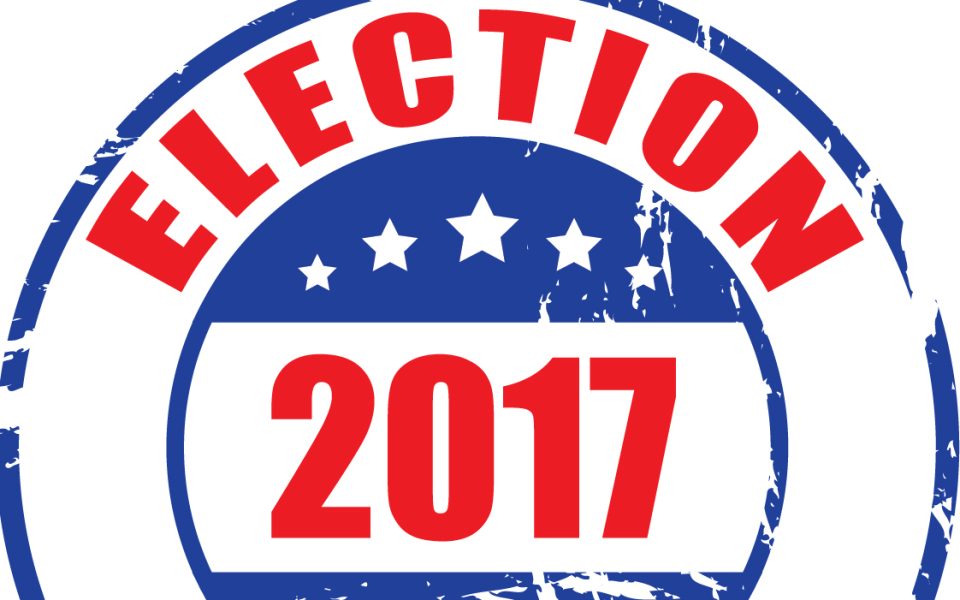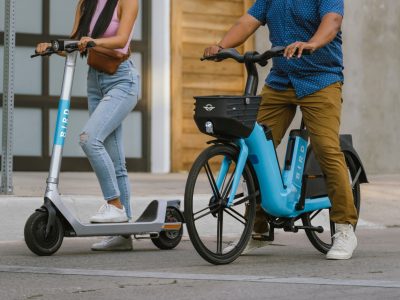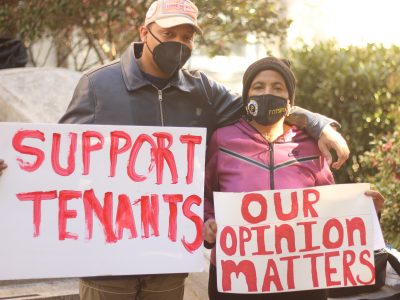Nancy Vaughan, who is seeking her third term as mayor of Greensboro, faces challengers from the left and right.
Since her election as Greensboro’s mayor in 2013, Nancy Vaughan has exemplified urban political leadership as a progressive counterweight to the hard-right Republican cohort that took control in Raleigh around the same time.
Vaughan led a council that successfully fought back against a redistricting plan that would have maximized Republican influence on city government, opposed the anti-LGBTQ HB 2 bill signed into law by then-Gov. Pat McCrory (and subsequently repealed), and passed a resolution declaring Greensboro a “stranger to neighbor” city — a markedly different signal from the General Assembly’s harsh crackdown against undocumented immigrants.
Under Vaughan’s leadership, Greensboro has rebounded from the Great Recession with a downtown renaissance manifested with a proliferation of brewpubs, continual progress on the Downtown Greenway and a modest construction boom near NewBridge Bank Park.

©
Yet the progressive consensus in North Carolina cities like Greensboro has shown some signs of fraying in the past two years, with persistent concerns about widening wealth inequality and tepid economic growth, coupled with tensions over police accountability. Charlotte Mayor Jennifer Roberts, who cuts a profile somewhat similar to Vaughan’s, went down in the defeat during that city’s partisan primary earlier this month. Both Charlotte and Greensboro have experienced turmoil over HB 2 and police-community relations, but Charlotte has faced more acute difficulties as the primary target of the anti-LGBTQ law and the uprising last fall that came in response to the police-involved shooting of Keith Lamont Scott.
Vaughan, who is seeking a third term that she says will be her last, faces challengers from the left and right in the city’s nonpartisan primary scheduled for Oct. 10. (Early voting is already underway.)
John T. Brown, a general contractor with support from local Republican donors, has been waging an aggressive campaign against Vaughan, attempting to make the case that she’s responsible for rising crime and a sluggish economy. The Rev. Diane Moffett, the pastor at St. James Presbyterian Church, has walked a careful line between supporting the police while calling for racial equity, and has offered herself as a unifier for a divided city.
During a recent interview at Green Joe’s Coffee Co. on Battleground Avenue, Vaughan acknowledged that the city’s efforts to attract quality jobs in a handful of targeted areas like medicine and advanced manufacturing has “been frustrating at times.” She talked about the city’s participating in a regional partnership to develop the Greensboro-Randolph Megasite. Vaughan declined to confirm or deny it, but her colleague Nancy Hoffmann has said that Toyota officials looked at the site in early September. While Vaughan said auto manufacturing would be the “gold standard” for the site, she added that a second-tier advanced manufacturing tenant would also make a significant impact on job creation.
“People who say we’re circling the drain, that’s just silly,” Vaughan said. “There is more negative self-talk about Greensboro. There’s more of that in Greensboro than any other city in North Carolina. We’ve got a lot of good things going on some people only focus on the negative.”
Brown has hammered a brutal message suggesting that a trifecta of job loss, high crime and high taxes is pulling Greensboro into a downward spiral of deterioration.

©
He says that the city has lost 1,000 high-wage jobs in the past two years, citing reports of six companies laying off workers, including tobacco manufacturing at ITG Brands and a Kellogg Co. distribution center. The Brown campaign doesn’t talk about jobs added in Greensboro. Since 2013, the year Vaughan took office as mayor, HondaJet has doubled its Greensboro workforce from 904 to 1,800, Lincoln Financial has added 221 jobs while investing $33 million in its downtown building, and Cone Health has added 1,200 jobs, according to company representatives. And in 2016, the aircraft maintenance company Haeco Americas said that its construction of a new hangar at Piedmont Triad International Airport would result in 500 new jobs.
The Brown campaign has pointed out that wage growth in Greensboro lags behind Durham, Charlotte and Raleigh, and that average wages in Durham are 36 percent higher than Greensboro.
Andrew Brod, an economist at UNCG, explained how the Triad cities lag behind their more dynamic peers in the Triangle and the Charlotte area in a July 2017 column for the Triad Business Journal. Describing Raleigh, Durham and Charlotte as “high fliers,” Brod wrote. “These regional economies feature universities, financial sectors, biotech and computing, consultancies and state government. They depend on skilled labor and attract talented people from around the state and country.”
In contrast, he pointed out that the workforces in Greensboro-High Point and Winston-Salem, along with Hickory, Goldsboro and Rocky Mount, have shrunk since 2008. “In terms of job growth, the last five metropolitan areas are more like rural North Carolina than Charlotte and the Triangle. They face long-term structural challenges related to declining manufacturing industries and changes in agriculture, and the Great Recession exacerbated the pain of adjustment. They haven’t fully recovered from a recession that ended eight years ago.”
While noting the advantages held by Raleigh, Durham and Charlotte, Vaughan said the Triad sustained the highest number of manufacturing losses in the 2000s and then got hit the hardest by the recession, adding, “It’s been a really hard climb back.”
Moffett said as mayor she would bring people together to forge a collective vision of the city’s economic future.
“Charlotte has banking, Winston-Salem is all about the arts,” she said. “Who are we? We used to be textiles and tobacco, and we’re trying to transform. I believe the answers are within us.”
Brown, like Bill Knight — a conservative Republican who served as mayor from 2009 to 2011 — says his business experience would uniquely position him to recruit employers.
“What I’ve found out is that CEOs of corporations like people who like them,” Brown said. “It’s that personal touch…. I have business experience.”
As part of Brown’s dystopian portrait of Greensboro, he says on his website that the city “is in the grips of a three-year crime wave.”
Crime stats maintained by the Greensboro Police Department do bear out that violent crime has been on the rise since 2015, but Brown’s claim omits the context that the starting point was a 28-year low. Violent crime hit its lowest point since 1976 — as far back as the department’s stats go — with 484 incidents per 100,000 residents, and then climbed to 608 in 2015 and 667 in 2016. But violent crime in 2016 was still lower than at any point between 1988 and 2009. The property crime rate continues to drop and has reached an all-time low.
Contributing to the perception that Greensboro is dangerous, Brown’s campaign website claims that “91 percent of cities in the US are safer than Greensboro,” citing a real estate website called Neighborhood Scout as the source. Susan Danielsen, the public information officer for the department, said the crime analysis team found several flaws in the methodology used by the site, including that the “data is several years old,” populations are inaccurate and the site uses a mix of crime reporting codes, resulting in an apples-to-oranges comparison. Danielsen said Greensboro is not included in the most recent FBI Uniform Crime Report for reasons she doesn’t understand; she said the department submitted the required data.
As to the rising number of violent crimes, Vaughan said, “I believe the only way we are going to make a dent in this is to build a level of trust between the community and the police department. Crime prevention is hard, but they need help on the closure rate.”

©
Moffett said she believes poverty is at the root of the rising number of homicides and other violent crime.
“This creates a sense of hopelessness, a sense of abdication,” she said. “That is all related. I think it’s systemic. We have to work very closely together and begin to dismantle those systems that are not helpful. Everybody wants to be safe. Everybody wants to have a quality of life. We’ve got to grow together. We’ve got to invest together and see what we can do.”
On the issue of police accountability, Moffett said city leaders need to be more proactive about calling out the misconduct of specific officers so that the whole department isn’t tainted, and said the city needs to acknowledge and address racial disparities in policing. She said the city needs to be transparent, while recognizing that state law significantly restricts the release of police body camera video.
Vaughan, who spent 16 months meeting on a weekly basis with police accountability activists like the Rev. Nelson Johnson, defended the city’s record.
“I think the complaint that council has not been transparent with police-community relations is not true,” she said. “We knew there was an issue with citizens not getting access to police body-camera videos, and we were one of the first cities to put together a policy. Unfortunately, the General Assembly had another idea.”
Brown charges on his campaign website that “Vaughan has increased crime by politicizing and interfering with the police department [and by] designating Greensboro a sanctuary city,” while asserting that the policy allows undocumented gang members to operate in the city.
While the first claim is a matter of debate, the second is simply not true. As support for the claim, Brown cites the Stranger to Neighbor City resolution unanimously adopted by city council in 2014. The resolution honors FaithAction International House, while endorsing its “Stranger to Neighbor” model “as an effective tool to build bridges of trust and understanding between city institutions and our newest neighbors leading to a better city for all Greensboro residents.”
While there is no legal definition for “sanctuary city,” it typically refers to jurisdictions that limit or restrict cooperation between the police and federal immigration authorities. Nothing in the “Stranger to Neighbor” resolution limits Greensboro police from communicating or cooperating with federal immigration authorities. In fact, sanctuary cities are illegal in North Carolina.
When challenged on the false claim, Brown brought up an unsubstantiated assertion that participants in a recent immigration rights rally took over the streets in downtown Greensboro, arguing that the protesters were breaking the law. But when asked if the police should be allowed to use their discretion to not make arrests if they thought it was in the greater interest of maintaining public safety, Brown said he would leave that up to the police chief.
Join the First Amendment Society, a membership that goes directly to funding TCB‘s newsroom.
We believe that reporting can save the world.
The TCB First Amendment Society recognizes the vital role of a free, unfettered press with a bundling of local experiences designed to build community, and unique engagements with our newsroom that will help you understand, and shape, local journalism’s critical role in uplifting the people in our cities.
All revenue goes directly into the newsroom as reporters’ salaries and freelance commissions.





From the article:
“Andrew Brod, an economist at UNCG, explained how the Triad cities lag
behind their more dynamic peers in the Triangle and the Charlotte area
in a July 2017 column for the Triad Business Journal. Describing
Raleigh, Durham and Charlotte as “high fliers,” Brod wrote. “These
regional economies feature universities, financial sectors, biotech and
computing, consultancies and state government. They depend on skilled
labor and attract talented people from around the state and country.”
Again, as Mr Brod stated, “They depend on skilled
labor and attract talented people from around the state and country.”
But as I’ve said for 40 years, they do little to nothing to improve the lives of those of us who already live here in Greensboro. –Billy Jones, Write-in candidate for Mayor of Greensboro